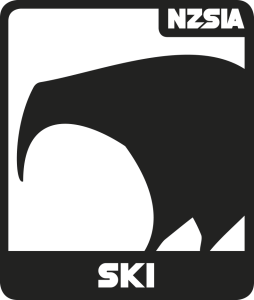Introduction to Skiing
 What, Why, How
What, Why, How
What
Skiers learn about ski equipment, the environment, moving around and mobility on the flat, and start to develop an athletic stance to allow for future success.
Why
Everything is new to first-time skiers: they need to learn about skis, boots, poles and they need to understand the snow and the slopes.
How
Using all four movements skiers can start with one ski sliding (both skis), then develop to walking, skating, sidestepping, and general mobility exercises on the flat.
VIDEO: First Timer with Naoko Adams
 Technical Know-how
Technical Know-how
What’s New
All four movements to help the skier walk, slide and adjust to control their skis and boots.
Performance Tips
Body: Focus on developing all four movements to create an athletic stance.

Skills
Situational Understanding
- Use flat terrain in a beginner area
- Make sure all equipment is appropriately fitted and being used correctly
- If using wider skis, understand edging will become harder and steering will become easier
- Keep speed slow
Active Stance & Balance
- Introduce fore/aft to develop balance along the length of the entire foot
- Introduce vertical to develop a range of movement through the ankle, knee, hip and spine
- Combine fore/aft and vertical movement to develop an athletic stance, helping the skier to feel control when the skis slide on the surface of the snow
Outside Ski Balance
- Develop balance from foot to foot
- Introduce walking with and without skis on, feeling a step from foot to foot
Edging
- Introduce lateral movement to develop the ability to tip the feet and legs from side to side
- Use lateral movement to feel the ski grip on the edge when sidestepping
Steering
- Introduce rotational movement to develop the ability to turn the legs
- Use rotational movement to feel the ski turn in different directions
- Introduce bullfighter turns as a way to turn around
- Skis will feel heavy and awkward to move and control when moving around on the flat
Ski Snow Interaction
- Minimal edge angle is required to move around safely on the flat
- Moving around on the flat will require steering angles to be created
- When sidestepping on the flat a platform angle will be achieved to give the skier a ledge to step off
 Teaching Tactics
Teaching Tactics
Terrain
The ideal terrain for skiers is a large flat area.
Class Handling
Skiers will not always be able to control their mobility straight away, so make sure that the chosen area is as flat as possible. Introducing the idea of the fall line and how to stand at 90 degrees to that fall line might be necessary. Strong control of the group will be required to keep all students safe and to allow for success. Creating boundaries can be very helpful, e.g. walking towards those poles and back, or creating a circle with the group and keeping the activities centred around the circle.
Example Activities
- One ski on - walking
- One ski on - attempting to slide
- One ski on - stepping around 360 degrees
- Repeat with other ski
- Both skis sliding back and forth using poles
- Walking with both skis on
- Side-stepping
- Skating
- Stepping around 360 degrees with two skis on

